Technology
Meat replacement startup Heura has a new mission to slay junk food with healthier plant-based swaps
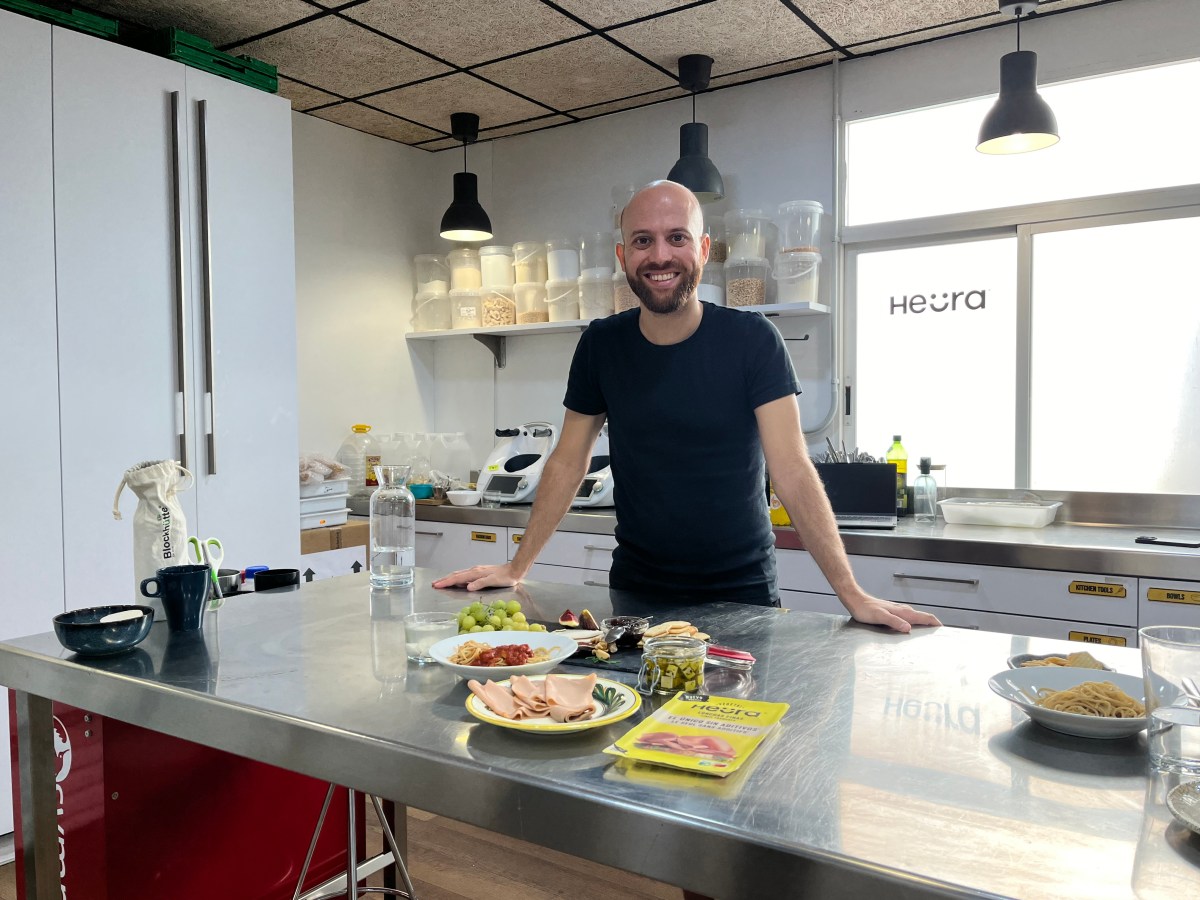
The offices of plant-based protein startup Heura are tucked away down a narrow street a short distance from one of Barcelona’s main tourist draws. But the team of entrepreneurs and food scientists won’t be remixing their protein cocktails in close proximity to La Sagrada Família for much longer — they’re moving to new, larger digs in Poblenou, a district where industrial-scale office space is a lot easier to come by.
As we’re shown around the “Heura House :)”, as the startup’s HQ is named (complete with beaming smilie), you can see why they want a bit more room to cook stuff up. A lower level of the narrow building is packed with lab machinery where a multi-disciplined team of scientists is developing the bases and textures that will underpin future food products. Up a metal staircase are two floors of office desks and meeting rooms and, higher still, a conference-room sized kitchen spans the back of the building. This is where foods can be prepared for tasting and presented on a large stainless steel table.
This is where TechCrunch meets Heura’s CEO and founder Marc Coloma and chief scientist Isa Fernández after getting a whistle-stop tour of the labs where the startup is working to serve up a smorgasbord of food IP.
Heura’s looming office move is not just a tale of a scaling startup outgrowing its digs. It coincides with a shift in strategy as the company gears up to use patent-pending blends of plant-based proteins to try to address another huge problem for the mainstream food industry: the poor nutritional quality of so much processed and packaged food.
This strategic shift beyond (pure) meat replacement looks smart. Focussing on nutrition and health may be a more mainstream-friendly way for Heura to get more people to reduce their meat and dairy consumption by buying into healthier substitutes that just happen to be vegan.
“What we are focused on is creating structures and matrices in many of the most consumed food categories, through plant proteins, and then also developing technologies that will help us to decrease costs of these formulations and increase the sensory aspect,” Coloma tells TechCrunch. “To keep improving flavor, keep improving taste — while reducing costs.”
Its €40 million Series B is helping juice the new strategy which will see it licensing its inventions to food manufacturers wanting to improve the quality of the products they sell, as well as bringing more new products to market under Heura’s own yellow-liveried consumer-facing brand.

Targeting the food industry’s quality problem
The problem Heura is setting its sights on is that industrially produced food is pretty often quite unhealthy, formulated with “no protein, high saturated fat, high sodium, no fiber,” says Coloma.
Such products were once generally referred to as junk foods. More recently there’s been a shift to defining the problem by applying a more scientific-sounding (less judgemental?) badge of ‘ultra processed food’ (UPFs).
UPFs is an imperfect label that tries to bundle up common industrial food techniques like refining, which removes healthy fiber and amps up simple sugars, and extensive use of additives, which can upset gut health and have other health impacts. The core problem Herua has in its sights, by targeting UPFs, can thus be boiled down to convenience foods that last long on shelves but have low nutritional density and are increasingly linked to poor health outcomes for consumers.
Heura is aiming to maintain convenience while ditching the junk by applying what it calls a “science-based approach” to reformulate a range of familiar foodstuffs in such a way as to avoid nutritional pitfalls. It’s doing this via a scientific process of microstructural design which it says allows it to control interactions between ingredients to yield foodstuffs with pleasant textures and an “amazing” nutritional composition, as Coloma tells it.
The thermo-mechanical techniques it’s using to process its selected plant-based ingredients are not different to standard food industry methods. Instead, the startup claims the innovation is in the level of micro-control it’s applying to designing food structures and interactions in order to serve up nutritionally dense foods with a great sensory experience. Or, put more simply, it’s designing foods that are healthy — or at least less unhealthy than conventional alternatives — but which are also enticing to eat.
“What we are doing is making the soy protein aggregate interact within itself in a specific way that nobody has been able to do through controlling processing conditions and then pH, [calcium] ions and things like that,” explains Fernández, discussing the work Heura’s scientists are undertaking in the lab. “So it’s all the scientific knowledge that we generate [which] allows us to create these micro structures — using, again, specific protein analytes that gives these textures.”
The food industry isn’t set up to take such an approach, argues Coloma, who says big players are mainly focused on product development. They’re looking at remixing available processing solutions plus functional ingredients, rather than changing the mix and micro-structure of ingredients to alter the nutritional profile of foods.
“They don’t know how to do it,” he suggests. “From a technology perspective, this holistic approach — about interactions — requires you to have a trans-disciplinary and holistic knowledge about many scientific disciplines. And this is not common.”
“And it’s not easy,” Fernández chips in. “We have a lot of people that have been looking at this problem, including me, for a long time.”
Using standard processing techniques in a way that can deliver novel food outcomes is how Heura is banking on achieving mass scale for this expansion into licensing its IP.
“Why we take this route is because this can make a mass market product,” says Coloma. “Because it’s scalable using industrial process that are simple and then with raw materials that are very available. We really believe in this route of interactions in order to unleash scalability.”
A long tail of poor nutrition
Poor nutritional value is not limited to packaged foods that contain animal-derived ingredients, of course. It’s a problem that cuts across the industrial food industry — from pot noodles to packets of ham and processed cheese to hot dogs and frozen pizza and beyond — and the plant-based category certainly hasn’t been immune.
In the vegan food aisle, heavy use of ingredients like modified starches which end up as simple carbohydrates, high levels of sodium (salt), and saturated fats like coconut oil can result in plant-based foods with poor health profiles. The meat lobby has often seized on such products to attack the alternative protein category generally. Such attacks ignore the existence of better quality vegan foods and seek to redirect attention away from the fact that many animal-derived packaged foods are cardinal UPFs themselves.
Nutritional problems for meat and dairy can include high saturated fat content, high sodium, low fiber and the use of additives (including things like antibiotics and growth hormones that may be fed to livestock) — while meat processing techniques can further exacerbate problems, such as curing amping up salt content and preservatives or frying leading to the formation of harmful compounds.
In the case of processed ham and other red meats these products have been classified as carcinogenic to humans. You’ll just never hear the meat lobby harping about that.
The alternative plant-based formulations Heura is cooking up aim to address the food industry’s quality problem broadly — cutting across categories, both animal-derived and plant-based — with the aim of driving positive change at industrial food scale.
The Barcelona-based startup is best known for its own brand meat replacement products, especially its chicken-style soy-based bites. Last year, it added plant-based Jamon York-style slices to its range. And that latter cold cuts product, which it’s been selling in Europe since October 2023, was the first developed through its new R&D intensive approach.

In the future, Heura will be expanding its efforts to commercialize a pipeline of lab-based inventions so it can reformulate many more types of foods. It says it’s setting its sights on “the most consumed” food categories — with cheese and pasta seemingly next in line for nutritional remixing.
Coloma jokily says they’ll start by drawing up a list of the “ten worst” UPFs to choose where to start. “We are already seeing that around 30% of people are looking for healthier options of the food that they love,” he adds. “So it’s changing the foods that they love without changing the taste.”
In Heura’s brightly lit demo kitchen, TechCrunch had the chance to sample a few of the prototypes Fernández and her team have been developing in the basement. Including some (tasty) Feta-style chunks and mini Mozzarella-esque balls. We also tried three other cheese prototypes, which ranged in texture from medium/chewy to softer.
The startup is keeping the full scope of its expansion plans under wraps for now because it still has multiple patents to file. But Coloma did let slip that future products formulated through this approach will include “indulgent” foods — his eye straying to a bank of frosted glass refrigerators at the side of the kitchen. So it sounds as if desserts could be in the mix too. (Protein-boosted vegan ice-cream is already a thing, after all.)
“Our vision is to become the Intel Inside for high value nutrition with amazing taste,” he told us, trying out the mouthfeel of a soundbite that Heura’s marketing team must have been cooking up in parallel to its lab-coated staff.
A twist on very familiar foodstuffs
Heura stressed that the prototype foods TechCrunch tasted were not yet finished products. These samples offered an early glimpse of what’s coming as it expands its plant-based range — so, essentially, we were getting a demo of texture and mouthfeel possibilities.
Fernández emphasized that no active flavors had been added beyond some herbs floating in oil in a jar of the faux Feta (hence that one stood out as tasty). All that work comes later when the product development team takes over from the food scientists, she noted.
Per Coloma, the prototypes also won’t make it to market for some years yet either. 2026 is the anticipated timeframe for Heura to commercialize this next wave of R&D. So we’re reserving judgement on the startup’s plant-based cheeseboard for now. But the selection we tried showed that textural variety is possible. Even as some of the samples tended towards more of a paté mouthfeel than a conventional cheese.
For another tasting, another staffer cooked us up a plate of reformulated spaghetti. The pasta looked and tasted exactly as you’d expect a conventional spaghetti (and was pleasingly al dente). But the twist is the pasta has been enriched with Heura’s legume-based protein — boosting the protein content of the dish up to 50% (whereas Coloma noted that pasta in mainstream foods typically contains 10% or less protein; or, for a higher quality pasta, 17% protein at the top end).
Heura is also adding fiber to its alternative formulations as another nutritional upgrade. Modern Western diets are known to be chronically short of fiber — which plays a key role in digestive and gut health, with many associated benefits including helping regulate blood glucose which also links to weight management and cardiovascular health.
Exact advantages of Heura’s formulations compared to the conventional foods it’s aiming to replace (or supplant) will vary. But in the case of the cheese products Coloma suggests its plant-based nutritional blends will be much healthier than conventional dairy-based cheese on account of not being larded with saturated fats.

Vegan cheeses that use coconut oil can have even higher levels of saturated fats than dairy-based cheese. So Heura is also able to offer its alternative blend of proteins and fats to other vegan food makers to improve their products. (Indeed, it already is: Coloma notes it’s inked a “collaboration agreement” with Upfield, which owns the Violife plant-based cheese brand for example — a faux hard cheese product that can have a bottom-of-the-range Nutri-Score of E (“bad nutritional quality”), per Open Food Facts.)
When it comes to taste and texture, whether plant-based cheeses will ever really be able to mimic the experience and mouthfeel of conventional dairy remains to be seen. A growing number of startups in the precision fermentation space are growing bio-identical proteins to animal-based cheese. They suggest that making similarly tasty alternatives to conventional cheese is no cakewalk. But even taking a chunk out of conventional dairy could mean big business for Heura’s plant-based remixers.
The startup is experimenting with traditional fermentation in its labs. But Coloma said that it’s more about exploring ways to use bacterias instead of aromas for flavor — the latter are expensive. It doesn’t plan to get into the precision fermentation game, he confirmed.
For Heura’s already-on-sale ham-style slices, its science-based approach has delivered a high convenience product that’s popular because it mimics the taste and look (and gelatinous feel) of the processed meat products it aims to replace. (We also got to nibble on a sample of this and found it uncannily meat-like.)

A tasty new health-focused strategy?
So will Heura be able to pull off similar nutritional swaps across many more food categories? When it comes to pasta, its planned formula has much more protein but, in our experience tasting the prototype, looks, tastes, smells (and moves) just like real spaghetti — so it seems like a clear win-win.
Disrupting dairy-based cheese is probably going to be more complex. At a minimum, there are still textural differences between Heura’s plant-based versions and conventional cheeses. Plus the prototypes we sampled won’t melt like real cheese — although we’re told some can be grilled, Halloumi-style.
It’s fair to say a cheese connoisseur will be hard to convince by plant-based substitutes. But Heura isn’t going after the artisanal end of the market. It’s more likely to be targeting a product such as a supermarket own-brand plastic bag of shredded mozzarella which costs a few euros. So there’s a lower food comparison bar to meet.
Its plant-based cheeses could also offer a cheaper ingredient for food manufacturers on account of using lower cost (and healthier) fats. Although Heura says cost changes from its formulations will vary per product and Coloma admits there could be situations where very poor quality foods remain cheaper still. (“If it’s really, really cheap — because they are using really cheap ingredients — there will be more difficulty [to undercut or achieve price parity],” he says. “But in some we can even be more efficient.”)
Heura’s biggest boast for forthcoming products made using its patent-pending IP is the claim of a healthier nutritional profile than conventional fare.
How the food industry will react to this pitch remains to be seen. But companies do have a range of commercial reasons to take an interest, especially as food makers are under growing pressure to find ways to reduce their carbon footprint. And swapping animal-based cheese with Heura’s plant-based alternative could rapidly improve a dairy product’s environmental impact, for example.
Additionally, there is a trend of rising awareness and interest among consumers about how healthy particular foods are. It could nudge more food makers to investigate swaps that can be marketed to consumers as better for them than the usual version.
Given such pressures — and assuming Heura is able to smoothly translate its lab work into a defensible portfolio of enticing food IP — it’s not too hard to imagine it could end up cutting itself a bigger slice of the food pie in the coming years.
Still, Coloma cautions it will take time to build up a licensing business as established food industry processes (and supply chains) clearly won’t flip overnight.
“This is our dream,” he says, when asked whether Heura is working towards the assumption that this licensing play will end up being the bigger portion of its business in the future. “We went into technology in order to open and license these solutions to other big players that already have a scale that we have to build [as a food startup].”
“The issue here… is that it takes a lot of time… This is a technology about the processing of the product, so we have to develop the product for them; get the agreement; get launched into the market; test and scale — so it will be processes, normally, of two to three years [to commercialize IP from lab to plate]. But from 10 years’ perspective, what you said, it could be a scenario.”
Coloma, who has a background in food activism, emphasizes that their goal with the new strategy is to push into many more food categories in order to dial up its ability to have a positive impact on the food system as a whole, both for food consumers and for the environment.
And while there are other food-tech startups with the same mission that are exploring even more radical protein bases than plants, Heura doesn’t have to wait for regulatory sign off to get its foods onto people’s plates. Coloma also argues that legume proteins are hard to beat when it comes to scaling high quality nutrition cost effectively — being orders of magnitude more efficient, in terms of land and resource use, than the animal-derived ingredients it wants to edge out.
A manifesto that looms several meters high on the Heura House stairwell inks the scale of its ambition in white-on-black block text. “We are the generation who will stop the exploitation of animal sources by delivering incredibly delicious plant based meat,” it reads.
Heura’s freshly expanded mission means its marketing team may soon need to sub out the word “meat” — and swap in “meals”.
When the company closed its Series B round earlier this year it set out a plan to reach net profitability by Q3 of next year. Coloma says the business is on track with that goal, noting that as well as using the money to expand its technology and IP portfolio they have been focusing on growing retail sales of their own brand meat replacement products around Europe.
“We are very focused in France, in Italy, in Portugal,” he says, noting its top three products currently are its faux chicken, plant-based burgers and the alternative Jamon York. “We are advancing a lot towards being the leader in the analogous category in the south of Europe. That’s advancing well… With the growth, with the structure that we have, we can reach profitability.”
Servers computers
Learn Network Cable Management Inside Rack From Scratch
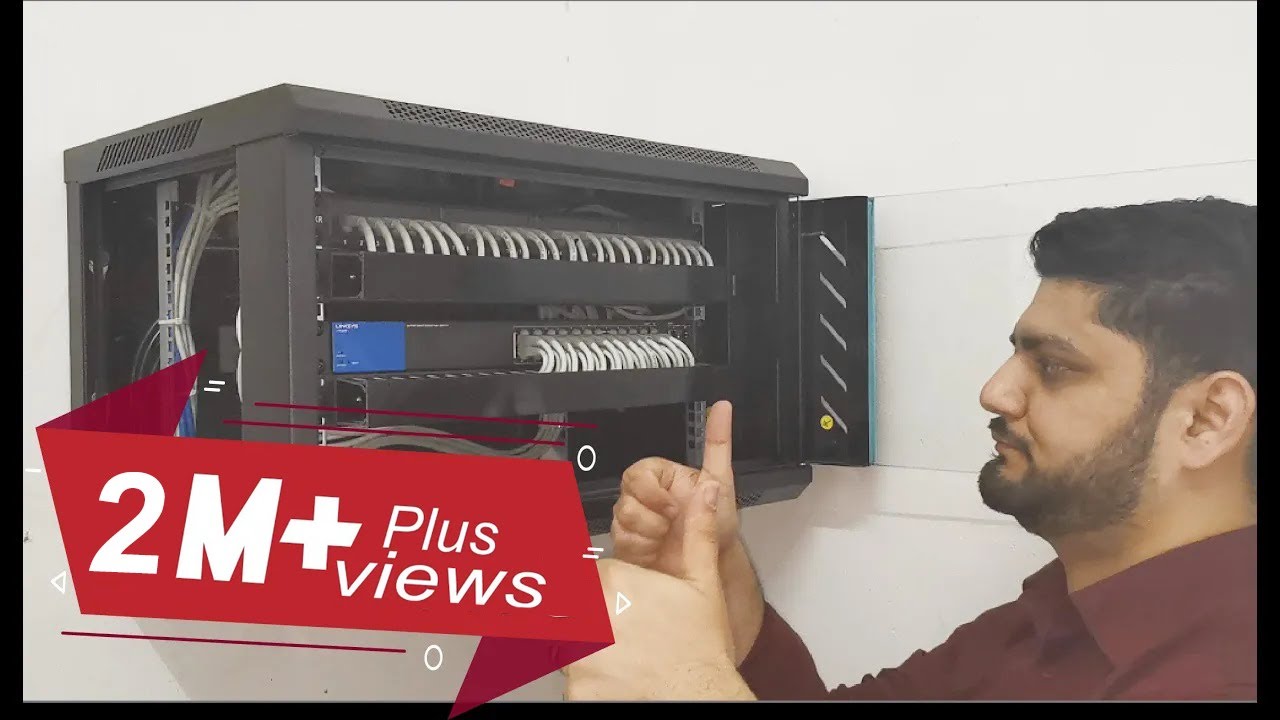
Hello everyone this is Hafiz with you and welcome to my channel.. As you can see this video is about building a network cabinet from scratch it is very important to build your network cabinet properly. If you don’t have a good network cable management strategy in place, not only your racks will look unorganized, but it can make maintenance more complicated, so i recorded this video from scratch so you can have an idea how to professionally setup network cabinet.
Next Video My Wireless Project with Ubiquiti Devices
👉 https://youtu.be/fUaTtM0sMGg
Thanks for watching the video :
Buy me a coffee 🙂 https://ko-fi.com/broexperts
1. Network Cable Bundle Organizer:
👉 https://amzn.to/3zV981a
2. Cable Manager:
👉https://amzn.to/3oXINcx
3. Network Cabinet:
👉 https://amzn.to/3d8urTN
4. Mic i used to Record the sound for this Video 🙂
👉 https://amzn.to/3JwK8k7
5. Laptop i Use
👉 https://amzn.to/3BJArgk
==== How to make an Ethernet Network Patch Cable RJ45 ====
Watch Here 📺 : http://bit.ly/2kXR5DF
~~~~~~~~Follow Us~~~~~~~~
@Subscribe | YouTube : http://bit.ly/BroExperts
@BroExperts | Twitter : http://bit.ly/2G4awTd
Visit our website: www.BroExperts.com
———————————————————————————————-
How to Save Facebook Videos to iPhone’s Camera Roll : http://bit.ly/HowToSaveFbvideosOniPhone
———————————————————————————————-
#NetworkCableManagement #RackManagement #BroExperts .
source
Technology
An Amazon Echo Show 5 and Blink Outdoor 4 bundle drops to only $60 ahead of Prime Day

We typically see some Amazon devices, including Blink cameras, drop in price ahead of both Prime Days in July and October. This time around, Prime members have an exclusive deal available to them right now on a bundle that includes the Echo Show 5 smart display and a Blink Outdoor 4 camera system for only $60. That’s a whopping $130 off the standard price and a record low. It’s part of a larger early Prime Day sale on Blink devices, including multi-camera systems, video doorbells and more.
This bundle is one that makes a lot of sense. You’ll be able to use your Echo Show 5 to get a live view of whatever the Blink Outdoor 4 camera is capturing with a simple Alexa command.
A bundle of the Blink Outdoor 4 camera and Echo Show 5 smart display has dropped to $60, the lowest price to date. But you’ll need to be a Prime member to snag this discount.
We recommend both products individually in our guides. We believe the Blink Outdoor 4 is the best wireless security camera around. The name is a bit of a misnomer as you can easily place it inside your home too, not least because it runs on two AA batteries. You’ll only need to replace the cells every two years or so.
If you do place the camera outside, you can rest easy knowing that it’s weather resistant. Other features include night vision, motion detection and two-way audio. You will need a Blink Subscription Plan to store clips in the cloud. Otherwise, you can save footage locally with a Sync Module 2 (which is available separately) and USB flash drive.
As for the Echo Show 5, it’s one of the best smart displays with Amazon Alexa (only beaten out by its larger sibling, the Echo Show 8). It’s a compact, 5.5-inch smart display that works well as an alarm clock on your nightstand. The tap-to-snooze function comes in handy there, while there’s a sunrise alarm that gradually brightens the screen.
The Echo Show 5 does have a built-in camera, which might give you cause for concern if you want to place it by your bed. But the physical camera cover should sate any privacy concerns on that front.
Follow @EngadgetDeals on Twitter for the latest tech deals and buying advice in the lead up to October Prime Day 2024.
Technology
How IT leaders can spearhead the charge to transform education

Presented by MSI
If a primary goal of education is to prepare kids for the future, IT leaders play a more pivotal role than ever. Technology has profoundly impacted work in every industry — and it’s opened up vast new possibilities in new fields, from positions across STEM industries and AI, to esports and beyond. It’s also transformed how students engage with learning, skill development and high-level problem-solving and critical thinking.
“Exposing students to computer science and high-end technology is not only useful for the future as they inevitably use it in their careers, but it changes their relationship to school,” says Mat Holley, esports program manager at MSI. “When they’re more engaged, they have better attendance. They have better grades. They’re more prepared for college and the job market. The enthusiasm is remarkable.”
School boards are leading the charge for these initiatives, but they can’t do it on their own. They must partner with IT leaders in their district, education specialists and technology industry professionals to deliver these learning experiences, and the challenge is to ensure that these programs are cost-effective, with technology, expertise and activities that are future-proof.
How technology is transforming the learning experience
To support these initiatives, the choice of hardware and software becomes critical. Holley points to the extracurricular club in the charter school district in Chula Vista, San Diego he worked with to help develop and outfit new technology learning initiatives. Students there work on video design, broadcasting, AI and music creation using Vector GP and Raider GE series laptops from MSI, integrating graphics hardware from Nvidia and processing power from Intel. And this high-end gaming hardware and software supports what’s become the largest high school-run esports program in the U.S., the Kern High School District Esports League.
“I’ve worked with schools that are far along their journey and ready to level up their hardware, to keep pace with how the kids are working and learning, and I’ve also helped districts build the programs from the ground up, from the right hardware to student outreach,” Holley explains. “And though much of this is uncharted territory, the momentum is building, sometimes through word of mouth.”
The surprising benefits of esports
Educators are sharing knowledge, sparking interest and collaborating with their peers, working toward developing a curriculum standard and blueprint for the hardware and software specifications that can support those programs.
Though it’s initially surprised many educators and leaders that esports can have such a profound effect on kids — especially the ones who often feel excluded from other sports — the number of esports programs is growing. Not only are there tremendous educational and social development benefits for the students that participate, esports also attracts kids who have never joined an extracurricular club: the girls who have felt left out in science and math classes, the BIPOC students who deserve bigger opportunities. The clubs raise their confidence in their own abilities, and more often than not, these students go on to study computer science or some other linked technology career.
“There is no barrier to entry to be a gamer, and this goes for computer science at large,” Holley says. “You don’t even have to be a gamer to enter these clubs. More and more, esports is plugged into all the various technology clubs like design, broadcasting and journalism, and formerly disenfranchised kids are finding their calling through these clubs in an unprecedented way.”
Building the learning experience from the ground up
Of course, there continue to be challenges for school districts developing these programs, and many of them come down to major budget constraints. There are also the difficulties that come with ensuring security is solid, that new technology is integrated into existing networks, and moving the environment from on-prem to the cloud. MSI collaborates with educational institutions to ensure that they’re not only hitting the district’s hardware specs, but new hardware will be integrated seamlessly.
“As we saw more esports integrated into schools, we worked with schools to meet the specifications of their price points, their warranty needs, which are typically longer than a retail warranty,” Holley says. “We wanted to also make sure that these were machines that the students got excited to play on, that sophisticated esports titles were supported. As we started to work with more schools closely, we integrated products from our professional line to improve the student experience and give them access to even more tech areas to explore.”
Educational IT leaders rejoice: adding computer labs like these is easier than ever. As computing advances, the size of the hardware continues to shrink, making student computers lightweight and easy for IT teams to deploy. IT leaders should also look for hardware that’s easy to integrate, especially from a security point of view — however, most districts are working with legacy hardware environments.
“As you build a technology center for students, you have to consider whether existing hardware will play with the new, and whether it will move to the cloud securely,” Holley says. “But as long as we can integrate security standards like content filters, custom imaging and Autopilot deployment, it’s much easier to deploy at scale in almost any environment. We try to build directly in tandem with district-wide IT departments, so they can tell us what they need and what their road map looks like. Then from the manufacturer side, we’re able to make sure that we all play along in the years to come.”
Another major consideration is product life cycles, which are incredibly short in the consumer world. IT leaders should work with a partner that offers dedicated hardware for education, with life cycles long enough to mesh with the fairly long bidding and buying timeline for education purchases.
And of course, as cloud computing becomes the standard, it’s important to stay abreast of hardware and software changes and evolving risk scenarios. That means research, testing and working with your supplier to keep informed about the newest hardware and software advancements and when it’s time to upgrade. It also means selecting hardware that’s easily upgradable and expandable.
Making hardware choices a whole lot easier
To support technology education, MSI offers the Cubi NUC and DP21, which support Intel vPro and Windows Autopilot to simplify management, enhance security and streamline the deployment process. Thunderbolt 4 technology and power delivery offer fast connectivity and charging. They’re also easily scalable, and offer real-time data processing for AI and machine learning. Their compact size offers flexible installation and a good performance vs. footprint ratio, plus flexible configuration.
The company also offers STEM, gaming and content creation computers like the DP180, CreatorPro, Vector GP and Raider GE series laptops with dedicated graphics hardware that accelerate graphics-heavy applications, and offer easy upgradability with expandable memory and storage options to ensure longevity.
Veteran resellers and manufacturers will work with decision-makers to ensure schools get the best hardware and software their money can buy, plus keep IT teams in the loop what’s coming next, and how to make sure students have every opportunity to learn with the newest technology possible.
“We’re paving a path for these students into the future, and it’s important that we’re equipping them for everything that’s to come,” Holley says. “Gaming and other high-tech hardware has become an integral part of the plan, so IT leaders must be willing to get creative when designing technology resources and work with allies across manufacturing and reselling to push initiatives forward.”
Dig deeper: Learn more here about the technology solutions that power today’s educational experiences.
Sponsored articles are content produced by a company that is either paying for the post or has a business relationship with VentureBeat, and they’re always clearly marked. For more information, contact
Servers computers
Rack serveur 18U à montage mural – RK1820WALHM | StarTech.com
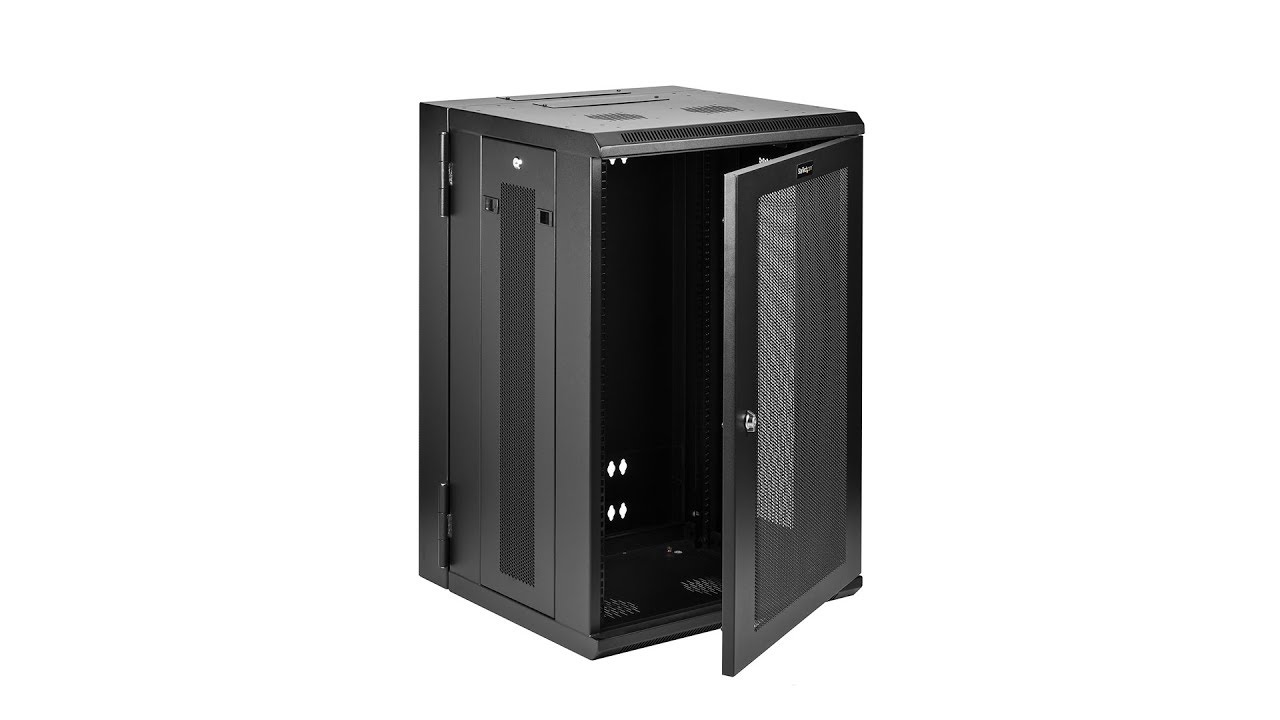
Cette armoire serveur 18U riche en fonctionnalités est idéale pour optimiser le stockage de l’équipement dans les centres de périphérie des armoires réseau et les magasins de technologie avec un espace limité, où il est nécessaire de recourir à un équipement montable. Elle est équipée de rails de montage réglables, de portes et de panneaux grillagés ainsi que d’options de refroidissement actif.
Pour plus d’information, visitez StarTech.com
source
Technology
Character.AI hires a YouTube exec as CPO, says it will raise money next year with new partners

Character.AI is starting a new chapter after its $2.7 billion licensing deal with Google, which involved CEO Noam Shazeer returning to the search giant. It hired Erin Teague as a chief product officer, a YouTube exec who was the global head of sports movies and shows product management.
Teague, who has been working at Google since 2016, will join Character.AI next week. She also previously served as a technical adviser to the SVP for Search, Ads, Maps, Gemini, Assistant, shopping, and payments most recently.
“Character.AI is setting a new bar for how everyday users interact with AI, pioneering personalized and engaging AI experiences at scale,” Teague said in a statement. “I look forward to building on this one-of-a-kind platform to innovate and design new features that entertain and delight.”
In August, the company announced that Shazeer was returning to Google. Another co-founder, Daniel De Freitas, also joined Google with 30 researchers.
Post these departures, Dominic Perella, Character.AI’s interim CEO and general counsel, told TechCrunch that the company has roughly 100 employees now and will completely focus on consumer AI solutions rather than chase artificial general intelligence. As departing employees mostly focused on pre-training models, the people who are still at Character.AI are largely focused on engineering, product, and post-training and tuning models.
Teague is the first major hire for the company after the co-founders departed to Google. Character.AI said that it will still keep looking for new C-Suite executives including a CEO to replace Perella.
Character.AI’s product and roadmap
The company has bought out all investors, and it’s completely employee-owned. No VC owns shares in Character.AI. The board consists of a16z and another employee.
“I expect that sometime next year, we will go out to the market and raise funds with a new venture capital partner. The reason for this is to have that investment in the company and get additional governance, partnership, and thought leadership,” Perella said.
Character.AI, which lets users create and interact with different AI-powered characters, now has more than 20 million monthly users, which has doubled year over year. The platform now has over 100 million characters.
In June, the company launched the ability for users to call AI characters and talk with them. The startup said that users have made over 107 million calls, and 40% of its users have made at least one call.
Perella added that Character.AI characters can already talk to people through text and voice, but the company is exploring other modalities, too.
The service’s $9.99 c.ai+ subscription is one of only consistent money-generating sources. However, the company is not currently concentrating on revenue generation and is instead focusing on growth.
Character.AI said that a lot of companies have approached the startup to power their characters, and it has explored some of these partnerships, but Perella didn’t specify whether there was something concrete on the cards.
“The vision that we have is that the next big consumer platform is really going to be about personalizing your interests in a way that algorithmic feeds of the last generation didn’t,” Perella said.
Science & Environment
Fly brain sheds light on human thought process

 MRC/Nature
MRC/NatureThey can walk, hover and the males can even sing love songs to woo mates – all this with a brain that’s tinier than a pinhead.
Now for the first time scientists researching the brain of a fly have identified the position, shape and connections of every single one of its 130,000 cells and 50 million connections.
It’s the most detailed analysis of the brain of an adult animal ever produced.
One leading brain specialist independent of the new research described the breakthrough as a “huge leap” in our understanding of our own brains.
One of the research leaders said it would shed new light into “the mechanism of thought”.
Dr Gregory Jefferis, of the Medical Research Council’s Laboratory of Molecular Biology (LMB) in Cambridge told BBC News that currently we have no idea how the network of brain cells in each of our heads enables us to interact with each other and the world around us.
“What are the connections? How do the signals flow through the system that can let us process the information to recognise your face, that lets you hear my voice and turn these words into electrical signals?
“The mapping of the fly brain is really remarkable and will help us get a real grasp of how our own brains work.”
We have a million times as many brain cells, or neurons, than the fruit fly which was studied. So how can the wiring diagram of an insect brain help scientists learn how we think?
The images the scientists have produced, which have been published in the journal Nature, show a tangle of wiring that is as beautiful as it is complex.
Its shape and structure holds the key to explaining how such a tiny organ can carry out so many powerful computational tasks. Developing a computer the size of a poppy seed capable of all these tasks is way beyond the ability of modern science.
Dr Mala Murthy, another of the project’s co-leaders, from Princeton University, said the new wiring diagram, known scientifically as a connectome, would be “transformative for neuroscientists”.
“It will help researchers trying to better understand how a healthy brain works. In the future we hope that it will be possible to compare what happens when things go wrong in our brains.”
That is a view backed by Dr Lucia Prieto Godolo, a group leader in brain research at the Francis Crick Institute in London, who is independent of the research team.
“Researchers have completed the connectomes of a simple worm which has 300 wires and a maggot which has three thousand, but having a complete connectome of something with 130,000 wires is an amazing technical feat which paves the way for finding the connectomes for larger brains such as the mouse and maybe in several decades our own.”
The researchers have been able to identify separate circuits for many individual functions and show how they are connected.
The wires involved with movement for example are at the base of the brain, whereas those for processing vision are towards the side. There are many more neurons involved in the latter because seeing requires much more computational power.
While scientists already knew about the separate circuits they did not know how they were connected together.
Why are flies so difficult to swat?
Other researchers are already using the circuit diagrams, for example to work out why flies are so difficult to swat.
The vision circuits detect which direction your rolled up newspaper is coming from, and they pass on the signal to the fly’s legs.
But crucially, they send a stronger jumping signal to the legs facing away from the object of their imminent demise. So you could say they jump away without even having to think – literally faster than the speed of thought.
This finding may explain why we lumbering humans seldom squash flies.
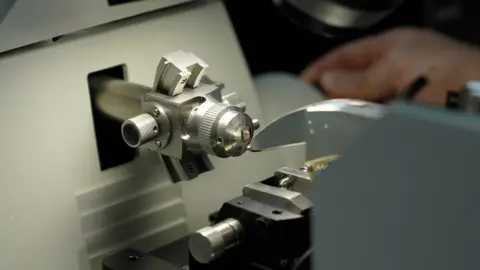 Gwyndaf Hughes/BBC News
Gwyndaf Hughes/BBC NewsThe wiring diagram was made by slicing up a fly brain using what is essentially a microscopic cheese grater, photographing each of the 7,000 slices and digitally putting them altogether. Then the Princeton team applied artificial intelligence to extract the shapes and connections of all the neurons. But the AI wasn’t perfect – the researchers still had to fix over three million mistakes by hand.
This in itself was a technical tour de force, but the job was only half done. The map on its own was meaningless unless there was a description of what each wire was supposed to do, according to Dr Philipp Schlegel, who is also from the Medical Research Council’s Laboratory of Molecular Biology.
“This data is a bit like Google Maps but for brains: the raw wiring diagram between neurons is like knowing which structures correspond to streets and buildings.
“Describing the neurons is like adding the names for streets and towns, business opening times, phone numbers, reviews, etc. to the map. You need both for it to be really useful.”
 BBC News
BBC NewsThe fly connectome is available to any scientist that wants to use it to guide their research. Dr Schlegel believes that the world of neuroscience will see “an avalanche of discoveries in the next couple of years” thanks to this new map.
A human brain is so much larger than the fly’s, and we don’t yet have the technology to capture all the information about its wiring.
But the researchers believe that perhaps in 30 years it may be possible to have a human connectome. The fly brain, they say, is a start of a new, deeper understanding of how our own minds work.
The research has been conducted by a large international collaboration of scientists, called the FlyWire Consortium.
-

 Womens Workouts1 week ago
Womens Workouts1 week ago3 Day Full Body Women’s Dumbbell Only Workout
-

 Technology2 weeks ago
Technology2 weeks agoWould-be reality TV contestants ‘not looking real’
-

 Science & Environment2 weeks ago
Science & Environment2 weeks ago‘Running of the bulls’ festival crowds move like charged particles
-

 Science & Environment2 weeks ago
Science & Environment2 weeks agoHyperelastic gel is one of the stretchiest materials known to science
-

 Science & Environment2 weeks ago
Science & Environment2 weeks agoMaxwell’s demon charges quantum batteries inside of a quantum computer
-

 Science & Environment2 weeks ago
Science & Environment2 weeks agoHow to unsnarl a tangle of threads, according to physics
-

 Science & Environment2 weeks ago
Science & Environment2 weeks agoHow to wrap your mind around the real multiverse
-

 News1 week ago
News1 week agoOur millionaire neighbour blocks us from using public footpath & screams at us in street.. it’s like living in a WARZONE – WordupNews
-

 Science & Environment2 weeks ago
Science & Environment2 weeks agoSunlight-trapping device can generate temperatures over 1000°C
-

 Science & Environment2 weeks ago
Science & Environment2 weeks agoLiquid crystals could improve quantum communication devices
-

 Science & Environment2 weeks ago
Science & Environment2 weeks agoITER: Is the world’s biggest fusion experiment dead after new delay to 2035?
-

 Science & Environment2 weeks ago
Science & Environment2 weeks agoPhysicists are grappling with their own reproducibility crisis
-

 Science & Environment2 weeks ago
Science & Environment2 weeks agoQuantum ‘supersolid’ matter stirred using magnets
-

 Science & Environment2 weeks ago
Science & Environment2 weeks agoWhy this is a golden age for life to thrive across the universe
-

 News2 weeks ago
News2 weeks agoYou’re a Hypocrite, And So Am I
-

 Sport2 weeks ago
Sport2 weeks agoJoshua vs Dubois: Chris Eubank Jr says ‘AJ’ could beat Tyson Fury and any other heavyweight in the world
-

 Science & Environment2 weeks ago
Science & Environment2 weeks agoQuantum forces used to automatically assemble tiny device
-

 Science & Environment2 weeks ago
Science & Environment2 weeks agoNuclear fusion experiment overcomes two key operating hurdles
-

 Science & Environment2 weeks ago
Science & Environment2 weeks agoCaroline Ellison aims to duck prison sentence for role in FTX collapse
-

 Science & Environment2 weeks ago
Science & Environment2 weeks agoTime travel sci-fi novel is a rip-roaringly good thought experiment
-

 Science & Environment2 weeks ago
Science & Environment2 weeks agoLaser helps turn an electron into a coil of mass and charge
-

 Science & Environment2 weeks ago
Science & Environment2 weeks agoNerve fibres in the brain could generate quantum entanglement
-

 News2 weeks ago
News2 weeks agoIsrael strikes Lebanese targets as Hizbollah chief warns of ‘red lines’ crossed
-

 CryptoCurrency2 weeks ago
CryptoCurrency2 weeks agoCardano founder to meet Argentina president Javier Milei
-

 Science & Environment1 week ago
Science & Environment1 week agoMeet the world's first female male model | 7.30
-

 Womens Workouts2 weeks ago
Womens Workouts2 weeks agoBest Exercises if You Want to Build a Great Physique
-

 CryptoCurrency2 weeks ago
CryptoCurrency2 weeks agoEthereum is a 'contrarian bet' into 2025, says Bitwise exec
-

 News2 weeks ago
News2 weeks ago▶️ Media Bias: How They Spin Attack on Hezbollah and Ignore the Reality
-

 Science & Environment2 weeks ago
Science & Environment2 weeks agoA slight curve helps rocks make the biggest splash
-

 Science & Environment2 weeks ago
Science & Environment2 weeks agoWhy we need to invoke philosophy to judge bizarre concepts in science
-

 CryptoCurrency2 weeks ago
CryptoCurrency2 weeks agoBitcoin miners steamrolled after electricity thefts, exchange ‘closure’ scam: Asia Express
-

 CryptoCurrency2 weeks ago
CryptoCurrency2 weeks agoDZ Bank partners with Boerse Stuttgart for crypto trading
-

 CryptoCurrency2 weeks ago
CryptoCurrency2 weeks agoBitcoin bulls target $64K BTC price hurdle as US stocks eye new record
-

 Womens Workouts2 weeks ago
Womens Workouts2 weeks agoEverything a Beginner Needs to Know About Squatting
-

 News1 week ago
News1 week agoFour dead & 18 injured in horror mass shooting with victims ‘caught in crossfire’ as cops hunt multiple gunmen
-

 Womens Workouts1 week ago
Womens Workouts1 week ago3 Day Full Body Toning Workout for Women
-

 Travel1 week ago
Travel1 week agoDelta signs codeshare agreement with SAS
-

 Politics7 days ago
Politics7 days agoHope, finally? Keir Starmer’s first conference in power – podcast | News
-

 Sport2 weeks ago
Sport2 weeks agoUFC Edmonton fight card revealed, including Brandon Moreno vs. Amir Albazi headliner
-

 Technology2 weeks ago
Technology2 weeks agoiPhone 15 Pro Max Camera Review: Depth and Reach
-

 News2 weeks ago
News2 weeks agoBrian Tyree Henry on voicing young Megatron, his love for villain roles
-

 Science & Environment2 weeks ago
Science & Environment2 weeks agoQuantum time travel: The experiment to ‘send a particle into the past’
-

 CryptoCurrency2 weeks ago
CryptoCurrency2 weeks agoDorsey’s ‘marketplace of algorithms’ could fix social media… so why hasn’t it?
-

 CryptoCurrency2 weeks ago
CryptoCurrency2 weeks agoRedStone integrates first oracle price feeds on TON blockchain
-

 CryptoCurrency2 weeks ago
CryptoCurrency2 weeks agoLow users, sex predators kill Korean metaverses, 3AC sues Terra: Asia Express
-

 CryptoCurrency2 weeks ago
CryptoCurrency2 weeks agoBlockdaemon mulls 2026 IPO: Report
-

 CryptoCurrency2 weeks ago
CryptoCurrency2 weeks agoCoinbase’s cbBTC surges to third-largest wrapped BTC token in just one week
-

 News1 week ago
News1 week agoWhy Is Everyone Excited About These Smart Insoles?
-

 Science & Environment2 weeks ago
Science & Environment2 weeks agoA new kind of experiment at the Large Hadron Collider could unravel quantum reality
-

 Science & Environment2 weeks ago
Science & Environment2 weeks agoHow one theory ties together everything we know about the universe
-

 Health & fitness2 weeks ago
Health & fitness2 weeks agoThe maps that could hold the secret to curing cancer
-
News2 weeks ago
the pick of new debut fiction
-

 Science & Environment2 weeks ago
Science & Environment2 weeks agoBeing in two places at once could make a quantum battery charge faster
-

 CryptoCurrency2 weeks ago
CryptoCurrency2 weeks agoCrypto scammers orchestrate massive hack on X but barely made $8K
-

 Science & Environment2 weeks ago
Science & Environment2 weeks agoTiny magnet could help measure gravity on the quantum scale
-

 Science & Environment2 weeks ago
Science & Environment2 weeks agoFuture of fusion: How the UK’s JET reactor paved the way for ITER
-

 Science & Environment2 weeks ago
Science & Environment2 weeks agoHow do you recycle a nuclear fusion reactor? We’re about to find out
-

 CryptoCurrency2 weeks ago
CryptoCurrency2 weeks agoTelegram bot Banana Gun’s users drained of over $1.9M
-

 CryptoCurrency2 weeks ago
CryptoCurrency2 weeks agoVonMises bought 60 CryptoPunks in a month before the price spiked: NFT Collector
-

 CryptoCurrency2 weeks ago
CryptoCurrency2 weeks agoSEC asks court for four months to produce documents for Coinbase
-

 CryptoCurrency2 weeks ago
CryptoCurrency2 weeks ago‘No matter how bad it gets, there’s a lot going on with NFTs’: 24 Hours of Art, NFT Creator
-
Business2 weeks ago
How Labour donor’s largesse tarnished government’s squeaky clean image
-

 News2 weeks ago
News2 weeks agoBrian Tyree Henry on voicing young Megatron, his love for villain roles
-

 Womens Workouts2 weeks ago
Womens Workouts2 weeks agoHow Heat Affects Your Body During Exercise
-

 Womens Workouts2 weeks ago
Womens Workouts2 weeks agoKeep Your Goals on Track This Season
-

 Science & Environment1 week ago
Science & Environment1 week agoX-rays reveal half-billion-year-old insect ancestor
-

 News2 weeks ago
News2 weeks agoChurch same-sex split affecting bishop appointments
-

 Technology2 weeks ago
Technology2 weeks agoFivetran targets data security by adding Hybrid Deployment
-

 Politics2 weeks ago
Politics2 weeks agoLabour MP urges UK government to nationalise Grangemouth refinery
-

 CryptoCurrency2 weeks ago
CryptoCurrency2 weeks ago$12.1M fraud suspect with ‘new face’ arrested, crypto scam boiler rooms busted: Asia Express
-

 Science & Environment2 weeks ago
Science & Environment2 weeks agoUK spurns European invitation to join ITER nuclear fusion project
-

 CryptoCurrency2 weeks ago
CryptoCurrency2 weeks agoDecentraland X account hacked, phishing scam targets MANA airdrop
-

 CryptoCurrency2 weeks ago
CryptoCurrency2 weeks agoCertiK Ventures discloses $45M investment plan to boost Web3
-

 CryptoCurrency2 weeks ago
CryptoCurrency2 weeks agoBeat crypto airdrop bots, Illuvium’s new features coming, PGA Tour Rise: Web3 Gamer
-

 CryptoCurrency2 weeks ago
CryptoCurrency2 weeks ago‘Silly’ to shade Ethereum, the ‘Microsoft of blockchains’ — Bitwise exec
-

 CryptoCurrency2 weeks ago
CryptoCurrency2 weeks agoVitalik tells Ethereum L2s ‘Stage 1 or GTFO’ — Who makes the cut?
-

 CryptoCurrency2 weeks ago
CryptoCurrency2 weeks agoEthereum falls to new 42-month low vs. Bitcoin — Bottom or more pain ahead?
-
Business2 weeks ago
Thames Water seeks extension on debt terms to avoid renationalisation
-
Politics2 weeks ago
‘Appalling’ rows over Sue Gray must stop, senior ministers say | Sue Gray
-

 News2 weeks ago
News2 weeks agoBrian Tyree Henry on his love for playing villains ahead of “Transformers One” release
-
Politics2 weeks ago
UK consumer confidence falls sharply amid fears of ‘painful’ budget | Economics
-

 Womens Workouts2 weeks ago
Womens Workouts2 weeks agoWhich Squat Load Position is Right For You?
-

 Science & Environment1 week ago
Science & Environment1 week agoCNN TÜRK – 🔴 Canlı Yayın ᴴᴰ – Canlı TV izle
-

 Technology1 week ago
Technology1 week agoRobo-tuna reveals how foldable fins help the speedy fish manoeuvre
-

 News6 days ago
News6 days agoUS Newspapers Diluting Democratic Discourse with Political Bias
-

 Technology2 weeks ago
Technology2 weeks agoIs carbon capture an efficient way to tackle CO2?
-

 Politics2 weeks ago
Politics2 weeks agoTrump says he will meet with Indian Prime Minister Narendra Modi next week
-

 Science & Environment2 weeks ago
Science & Environment2 weeks agoSingle atoms captured morphing into quantum waves in startling image
-

 Technology2 weeks ago
Technology2 weeks agoCan technology fix the ‘broken’ concert ticketing system?
-

 Fashion Models2 weeks ago
Fashion Models2 weeks agoMixte
-

 Science & Environment2 weeks ago
Science & Environment2 weeks agoHow Peter Higgs revealed the forces that hold the universe together
-

 Health & fitness2 weeks ago
Health & fitness2 weeks agoThe secret to a six pack – and how to keep your washboard abs in 2022
-

 CryptoCurrency2 weeks ago
CryptoCurrency2 weeks ago2 auditors miss $27M Penpie flaw, Pythia’s ‘claim rewards’ bug: Crypto-Sec
-

 CryptoCurrency2 weeks ago
CryptoCurrency2 weeks agoJourneys: Robby Yung on Animoca’s Web3 investments, TON and the Mocaverse
-

 CryptoCurrency2 weeks ago
CryptoCurrency2 weeks agoLouisiana takes first crypto payment over Bitcoin Lightning
-

 CryptoCurrency2 weeks ago
CryptoCurrency2 weeks ago‘Everything feels like it’s going to shit’: Peter McCormack reveals new podcast
-

 Science & Environment2 weeks ago
Science & Environment2 weeks agoA tale of two mysteries: ghostly neutrinos and the proton decay puzzle
-

 CryptoCurrency2 weeks ago
CryptoCurrency2 weeks agoSEC sues ‘fake’ crypto exchanges in first action on pig butchering scams
-

 CryptoCurrency2 weeks ago
CryptoCurrency2 weeks agoBitcoin price hits $62.6K as Fed 'crisis' move sparks US stocks warning
-

 CryptoCurrency2 weeks ago
CryptoCurrency2 weeks agoCZ and Binance face new lawsuit, RFK Jr suspends campaign, and more: Hodler’s Digest Aug. 18 – 24

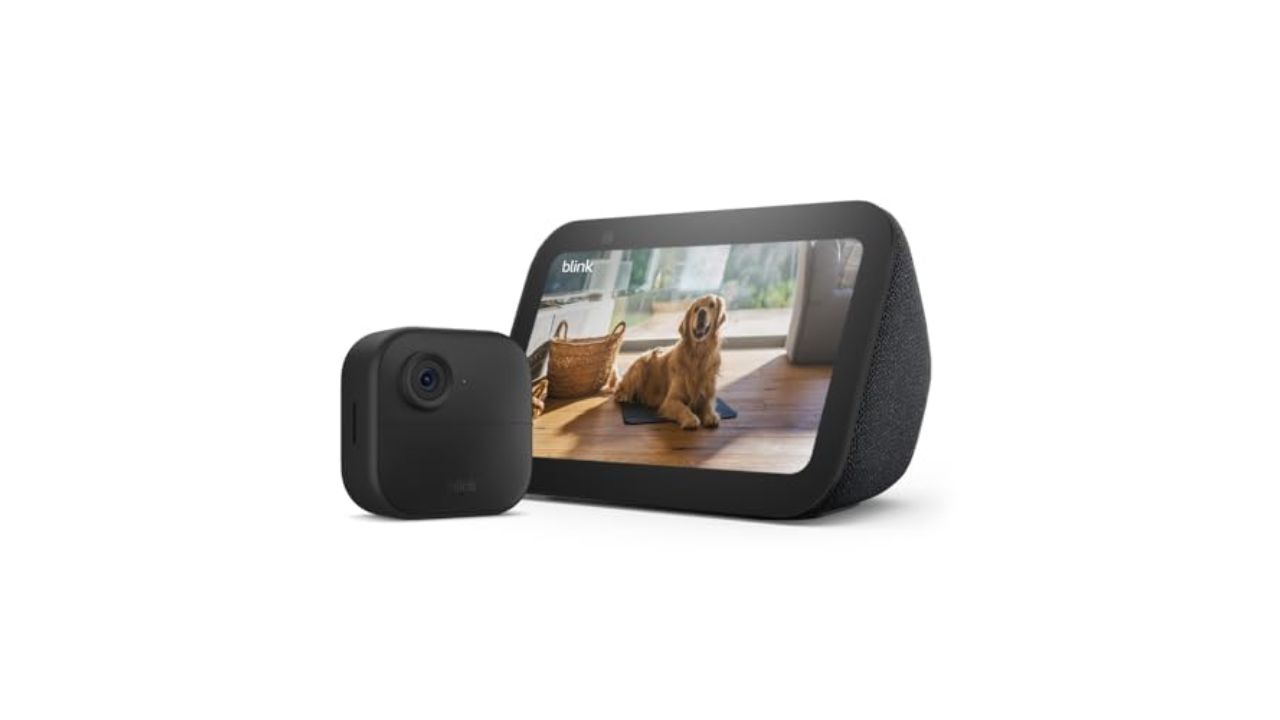

You must be logged in to post a comment Login